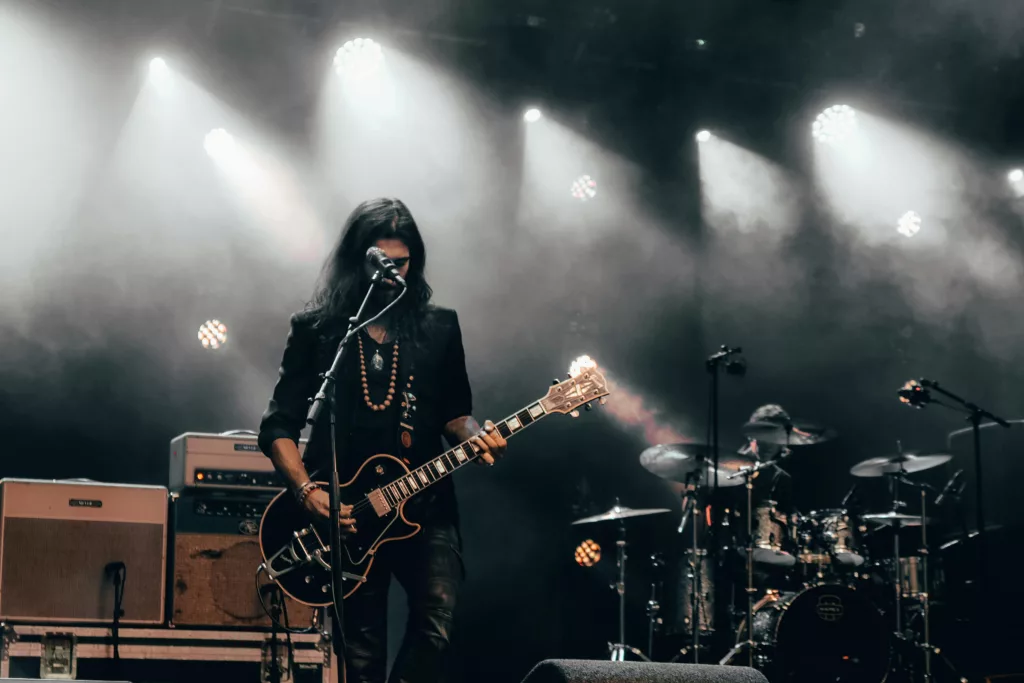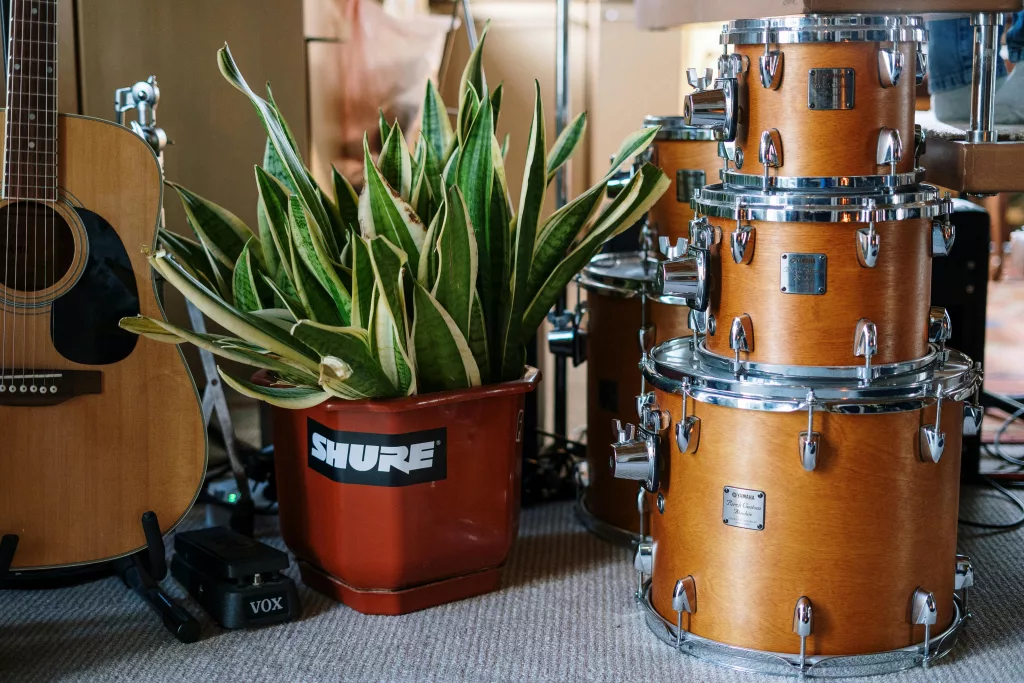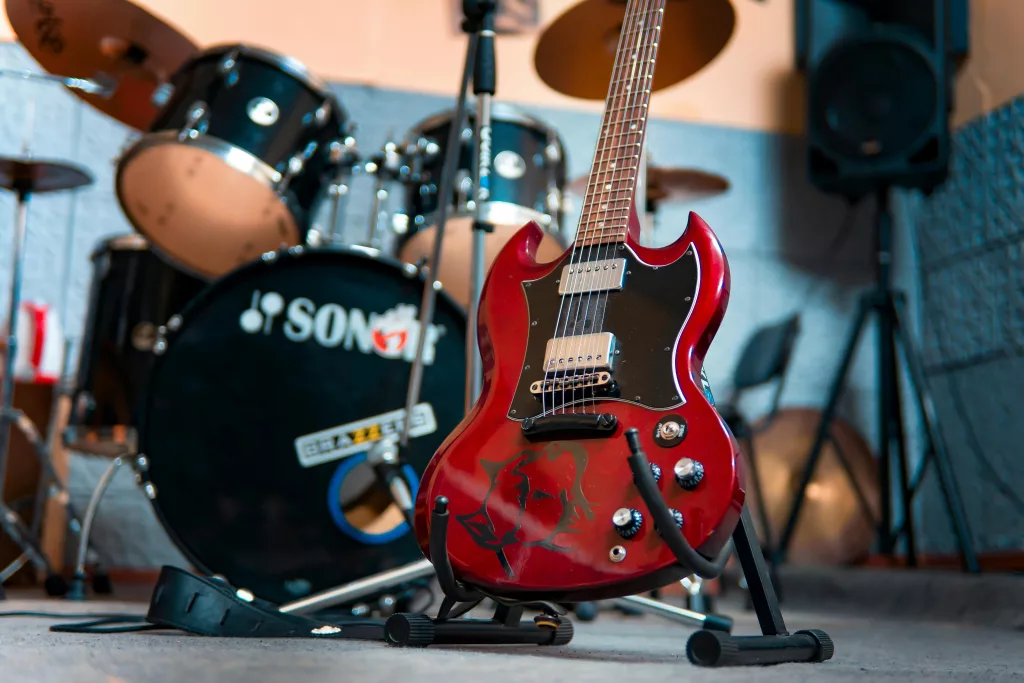The DrumS: A Rhythmic Evolution Through the Ages
Music, a universal language, has been shaped over time thanks to the constant evolution of drums.
From the first primitive percussion instruments to the sophisticated electronic drums of today, let’s dive into the history and the various types of drums that have left their mark on the world of music.
Primitive Percussion: The Beats of Origins
Before the advent of modern drums, primitive percussion punctuated the first musical expressions.
From hand drums to tambourines, these percussive instruments accompanied tribal songs and ritual dances, creating the first beats that captivated listeners.
Jazz Drums: The Emergence of a Rhythm Section
With the advent of jazz in the early 20th century, drumming began to take shape.
Drummers such as Baby Dodds and Gene Krupa introduced the use of cymbals, snare drums and bass drums, therefore establishing the drums as the central rhythm section in jazz.
Rock 'n' Roll and the Golden Age of Drums: Energy and Power
The explosion of rock ‘n’ roll in the 1950s propelled drums to the forefront of the musical scene.
Iconic drummers such as The Who’s Keith Moon and The Beatles’ Ringo Starr brought new energy and power to performances, introducing larger drum setups and innovative playing techniques.


Electronic Drums: Sound Revolution
At the end of the 20th century, the advent of electronic drums revolutionized music. Velocity-sensitive pads and a multitude of sampled sounds allowed drummers to explore an endless variety of tones.
Electronic drums therefore also offer the possibility of integrating programmed rhythms and sound effects, thus expanding creative horizons.
Hybrid Batteries: Fusion of Analog and Digital
The contemporary evolution of drums has given rise to hybrid configurations, merging the organic aspect of acoustic drums with the versatility of electronic elements.
Drummers can now integrate electronic triggers, pads and sound modules, providing an expanded sonic palette and unprecedented adaptability.
Artificial Intelligence and Drums: Redefining Boundaries
At the dawn of the 21st century, artificial intelligence began to influence the world of batteries. Intelligent systems can analyze drummers’ playing patterns and generate automated accompaniments, or even anticipate dynamic variations during a performance.
This therefore opens up exciting perspectives for the interaction between humans and technology in music creation.


Drum and Bass: Rhythmic Fusion
Changing musical genres have also influenced the role of the drums. The emergence of drum and bassin the 1990s featured fast and complex rhythms, testing the virtuosity of drummers.
From electronic percussion to syncopated rhythms, drum and bass has redefined the way drums can create captivating grooves.
Metal Drums: Power and Double Pedal
The metal genre has brought new challenges and innovative playing techniques to the drums.
Drummers such as Metallica’s Lars Ulrich and Dream Theater’s Mike Portnoy introduced the extensive use of the double bass drum pedal, adding a dimension of power and speed to performances.
Fusion and Battery: Unlimited Exploration
Musical fusion, combining elements of jazz, rock and funk, provided unlimited territory for drummers to explore.
Iconic figures like Billy Cobham and Tony Williams pushed the technical boundaries of drumming, exploring complex time signatures and daring improvisations.


Latino Drums: Hot Rhythms and Traditional Percussion
Latin American music introduced haunting rhythms and traditional percussion to the world of drumming.
Drummers like Tito Puente and Sheila E. have incorporated elements of congas, timpani and other percussive instruments, creating a unique fusion between drumming and Latin musical traditions.
Electro-Acoustic Drums: Harmony between Analog and Digital
The advent of electro-acoustic drums paved the way for harmony between the analog and digital worlds.
Drummers like Jojo Mayer have exploited these hybrid configurations, integrating electronic elements to expand the sonic possibilities while therefore retaining the organic resonance of acoustic drums.
Pioneer Drummers: Evolution of Technique
In addition to the names previously mentioned, certain drummers have left their mark on history through their technical influence.
Buddy Rich, considered one of the greatest drummers of all time, was a master of velocity and virtuosity.
Dave Weckl brought complex fusion techniques, while Steve Gadd therefore expanded the rhythmic language of the drums.
Iconic Names
- Neil Peart (Rush) – Virtuosity and progressive composition.
- Ginger Baker (Cream) – Pioneer of rock and jazz fusion.
- Elvin Jones (John Coltrane Quartet) – Revolutionary of modern jazz.
- Carter Beauford (Dave Matthews Band) – Fusion of styles and genres.
- Gene Krupa – Major influence in the swing era.
- Trilok Gurtu – Exploring global percussion in jazz.
- Terry Bozzio – Technical innovation and custom batteries.
- Vinnie Colaiuta – Versatility in rock, jazz and pop.
- Benny Greb – Modern techniques and musical education.
- Evelyn Glennie – Deaf percussionist, ambassador for diversity in music.
References of the Largest Batteries Part 1
Rock:
Ludwig Classic Maple: Prized for its tonal balance, it was used by John Bonham of Led Zeppelin.
Gretsch USA Custom: Known for its warm sound, Neil Peart of Rush was a notable user.
Jazz:
Sonor AQ2 Martini Kit: Valued for its punch and articulation, often used in more intimate jazz contexts.
Yamaha Recording Custom: Preferred for its excellent resonance and versatility in modern jazz.
Metal :
Tama Starclassic Bubinga: Known for its power, it was used by Lars Ulrich of Metallica.
DW Collector’s Series: Appreciated for its projection and clarity, often chosen in technical metal.
Funk:
Pearl Reference Pure: Known for its versatility, often chosen for its abilities in funky grooves.
Mapex Saturn V: Appreciated for its resonance and attack, ideal for funky rhythms.
Blues:
Slingerland Vintage Series: Famous for its vintage character, it was used by classic blues drummers.
C&C Player Date II: Known for its dry, retro sound, suited to the subtle nuances of the blues.
References of the Largest Batteries Part 2
Country:
- Gretsch Renown Maple: Appreciated for its clear, bright sound, often chosen for traditional country.
- Pearl Masters Maple Gum: Known for its versatility, adapted to the demands of modern country.
Electronics:
- Roland V-Drums TD-50KV: Considered a benchmark in high-end electronic drums.
- Alesis Strike Pro: Popular for its combination of realistic pads and high-quality sounds.
Crossover (Versatile):
- Mapex Armory: Known for its balance of power and sensitivity, suitable for various genres.
- DW Performance Series: Prized for its versatility, often used by drummers who play in multiple styles.
These references thus illustrate the diversity of batteries and how they are chosen according to the specific requirements of different musical genres.
Each drum therefore offers a distinct sonic character, thus helping to shape the musical aesthetic in its respective genre.
Conclusion
The history of drums in music is a journey punctuated by continuous innovation.
From primitive percussion to electronic drums and beyond, each step has helped to redefine the soundscape of music.
As technology advances, the relentless beat of innovation continues to inspire musicians to push the boundaries of rhythmic creativity.
